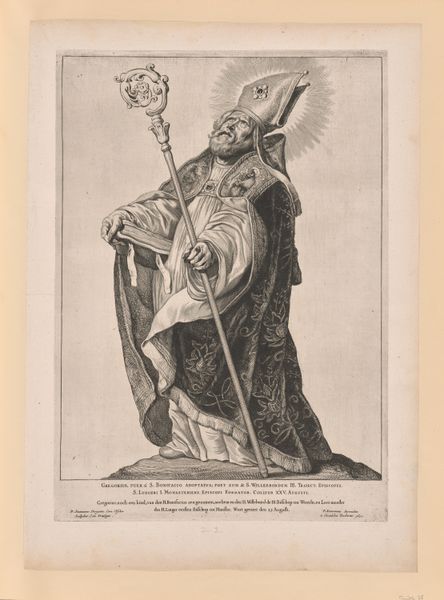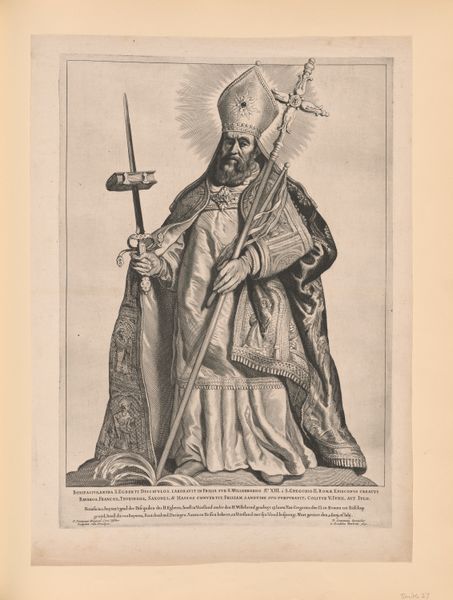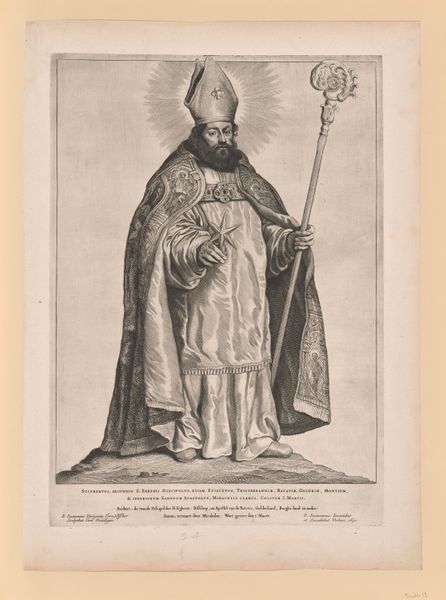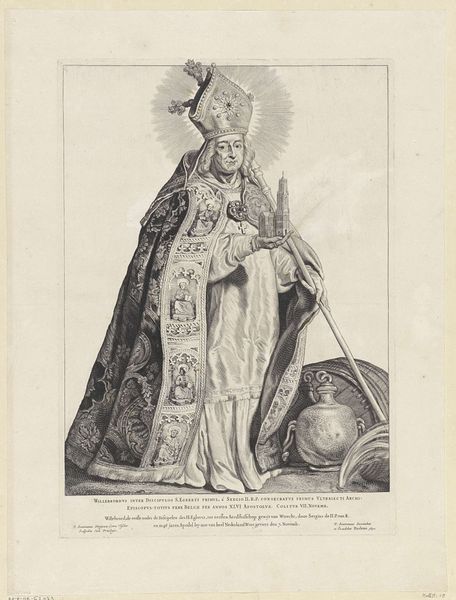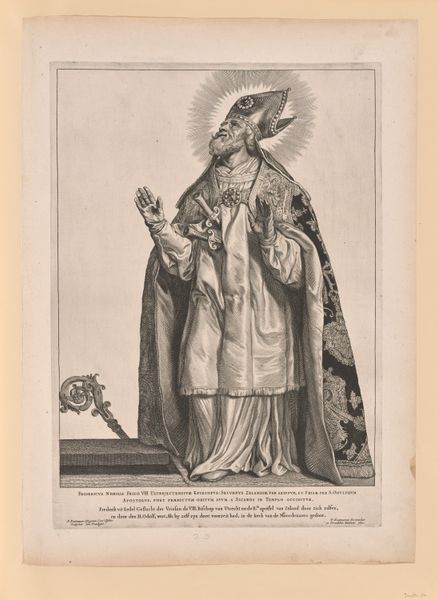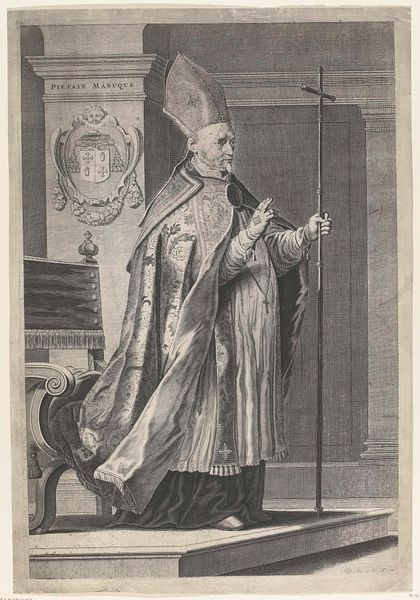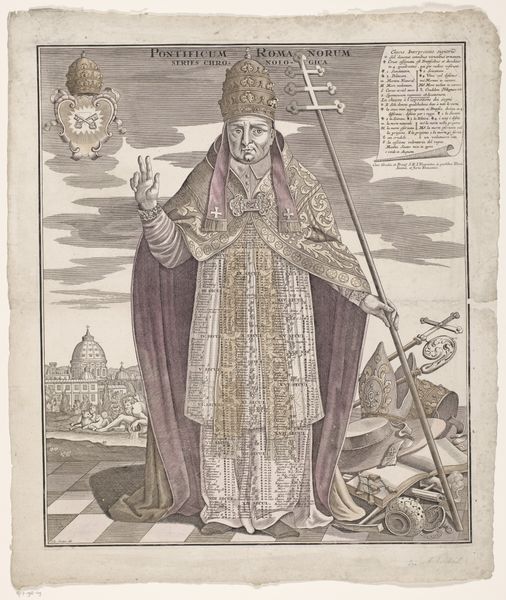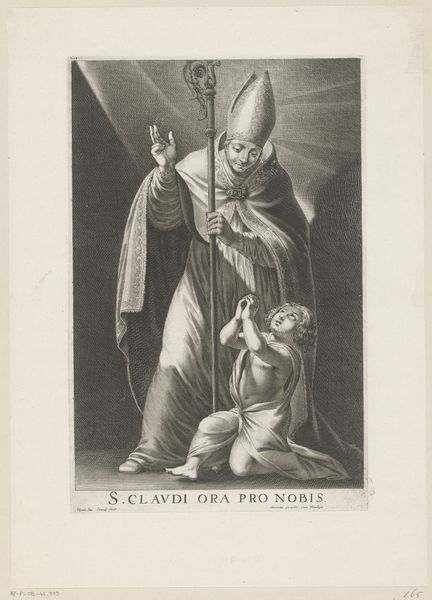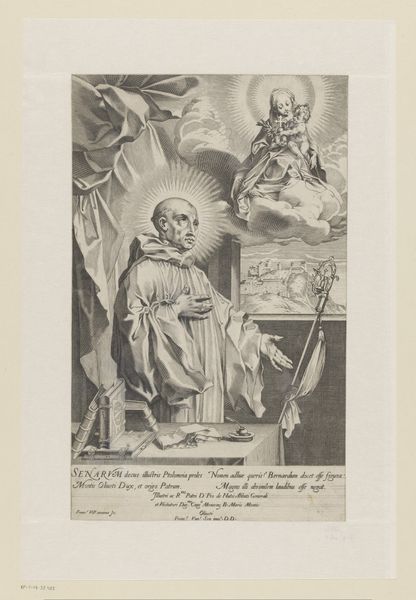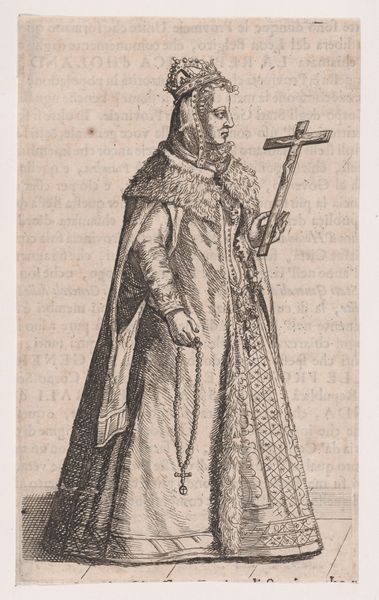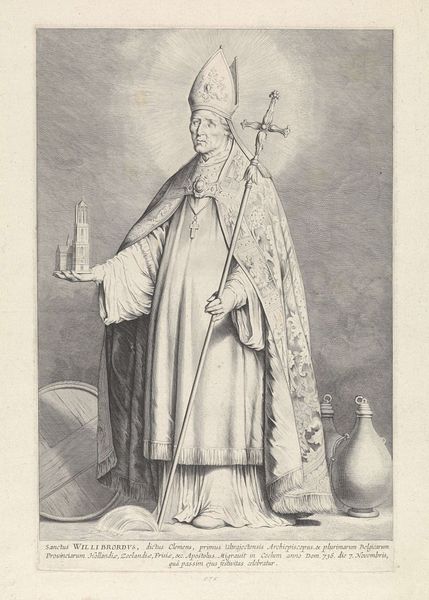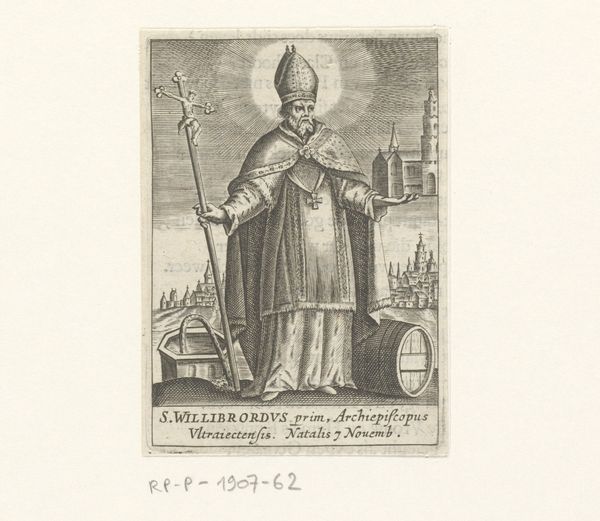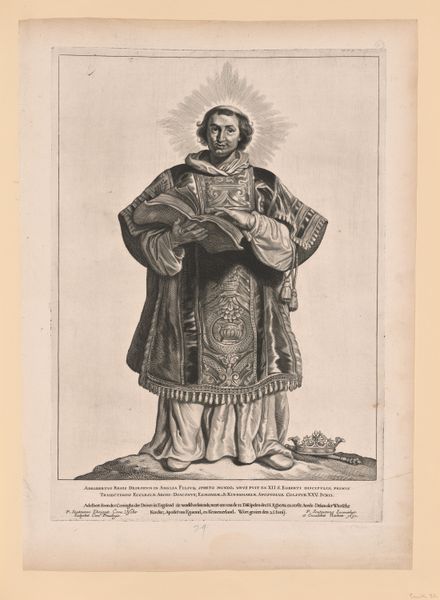
Saint Swithbert, from Saints of the North and South Netherlands 1650
0:00
0:00
drawing, print, paper, engraving
#
portrait
#
drawing
#
baroque
# print
#
paper
#
personal sketchbook
#
history-painting
#
engraving
Dimensions: 445 × 315 mm (image/plate); 515 × 375 mm (sheet)
Copyright: Public Domain
Curator: What strikes me immediately is the incredible detail in this engraving; look at the almost impossibly fine lines that create such depth. Editor: That's a good segue to introduce what we are looking at, this is a 1650 engraving by Cornelis Visscher, called Saint Swithbert, from Saints of the North and South Netherlands, part of the Art Institute of Chicago's collection. I see this as primarily about the paper it's printed on, its material essence almost overcomes the image it bears. Curator: Oh, the paper is lovely. The weight must be wonderful to hold. But for me, the real essence of this print lies in the character of Saint Swithbert. I sense a serene, gentle soul, wouldn’t you agree? Editor: I see someone much more imposing, almost rigidly so. The detail in the clothing feels deliberately opulent – that robe would’ve taken immense labor. It says a lot about the economic systems upholding religious institutions at the time, wouldn't you say? Curator: Perhaps, but I'm drawn to that light behind his head and how it shapes his expression and makes the overall scene, dare I say, heavenly. The engraving becomes an exploration of piety, as well as faith’s subtle power over earthly realms. Look at the subdued figure standing before him – almost like an acknowledgement of human weakness and struggle. Editor: And perhaps a comment on colonization through religion as well! Think about where the raw materials for the paper came from, how they were processed, what human costs went into their final form, ready to bear this particular image of power and control. Curator: It's curious how differently we see the narrative! Ultimately, for me, it speaks of the transformational power of faith, where individuals find solace, guidance, or hope in something greater. But thinking of the means of its creation in that context does bring up something new. Editor: Absolutely! Examining these kinds of engravings in terms of material process adds a completely other level of historical appreciation. Thinking through who touched the paper, cut the lines, pulled the prints—reveals an undercurrent of labor and cultural exchange behind even seemingly simple works of devotion.
Comments
No comments
Be the first to comment and join the conversation on the ultimate creative platform.
